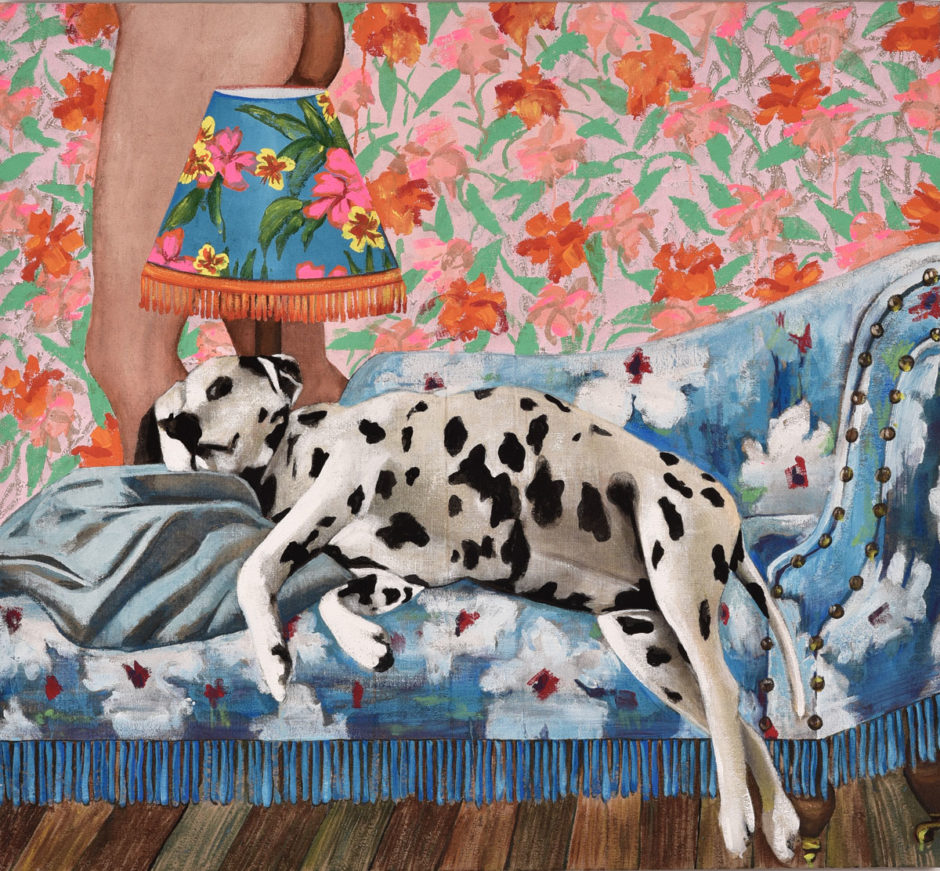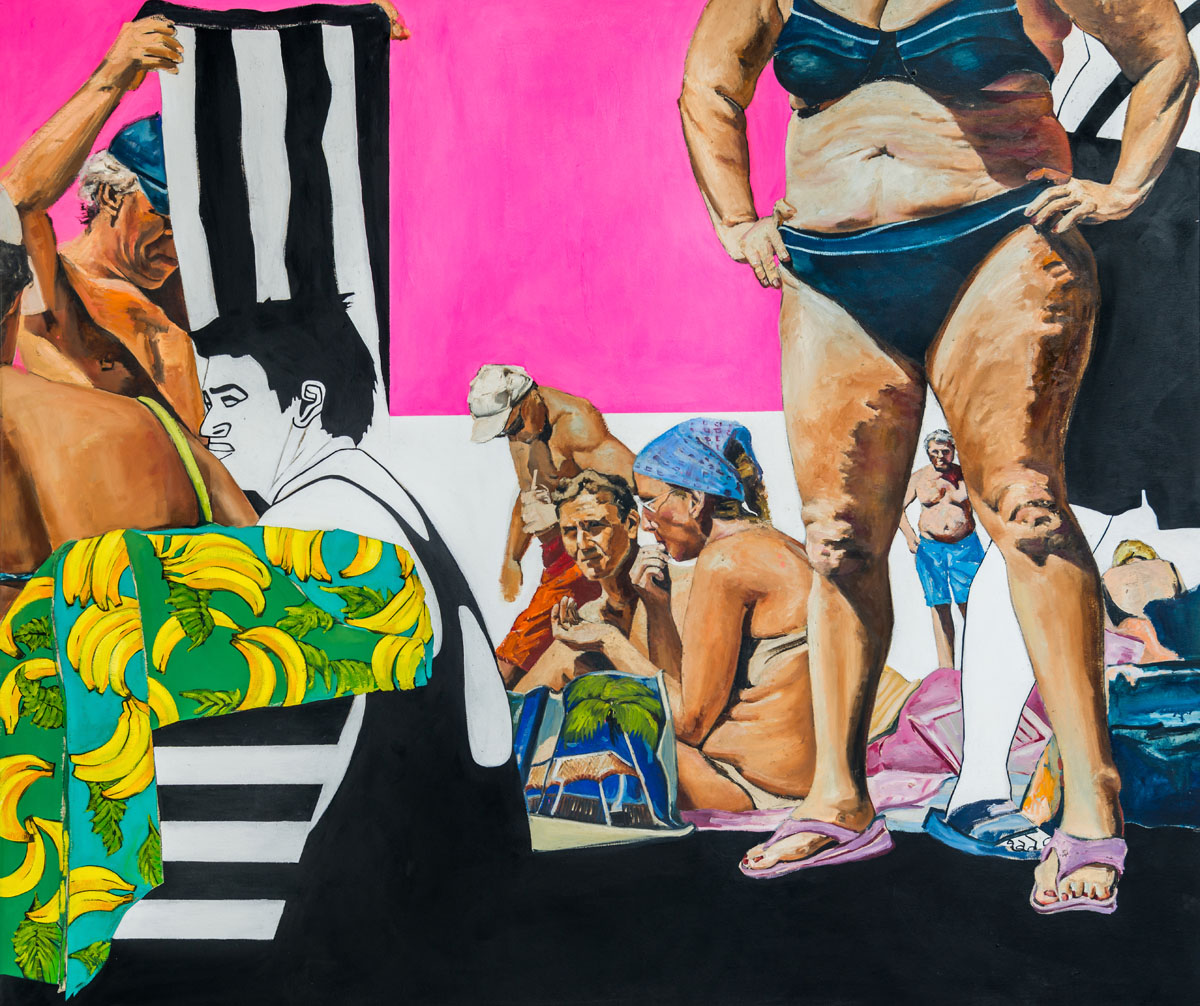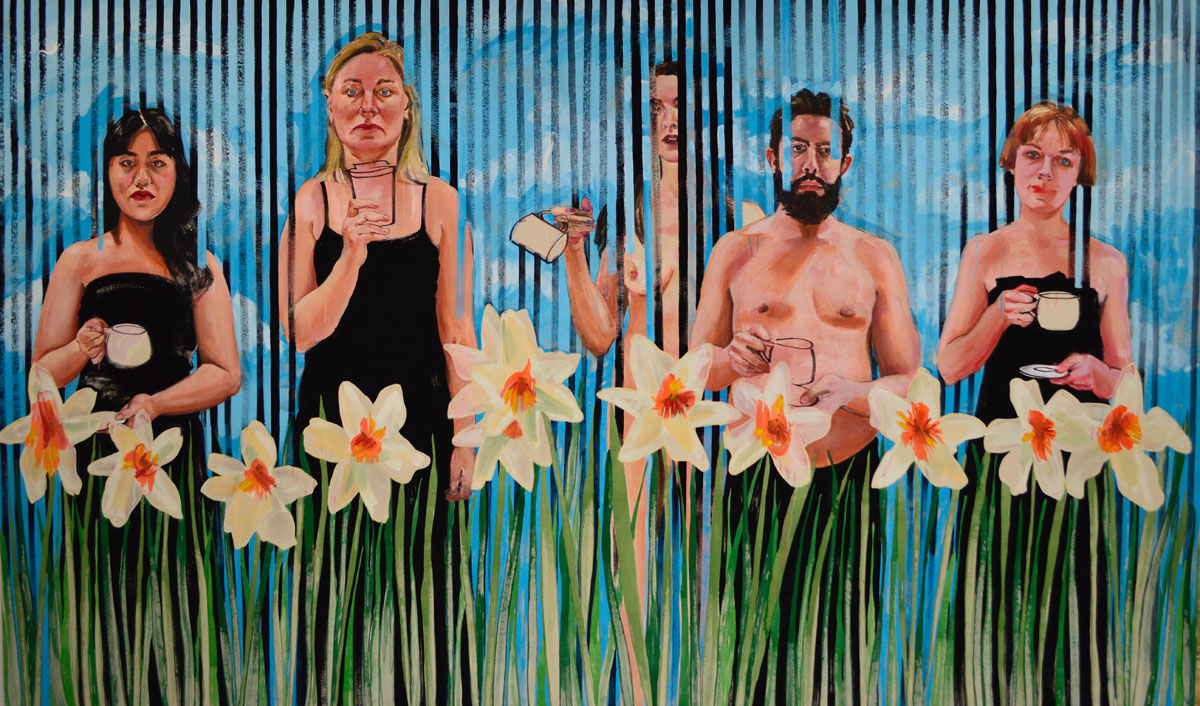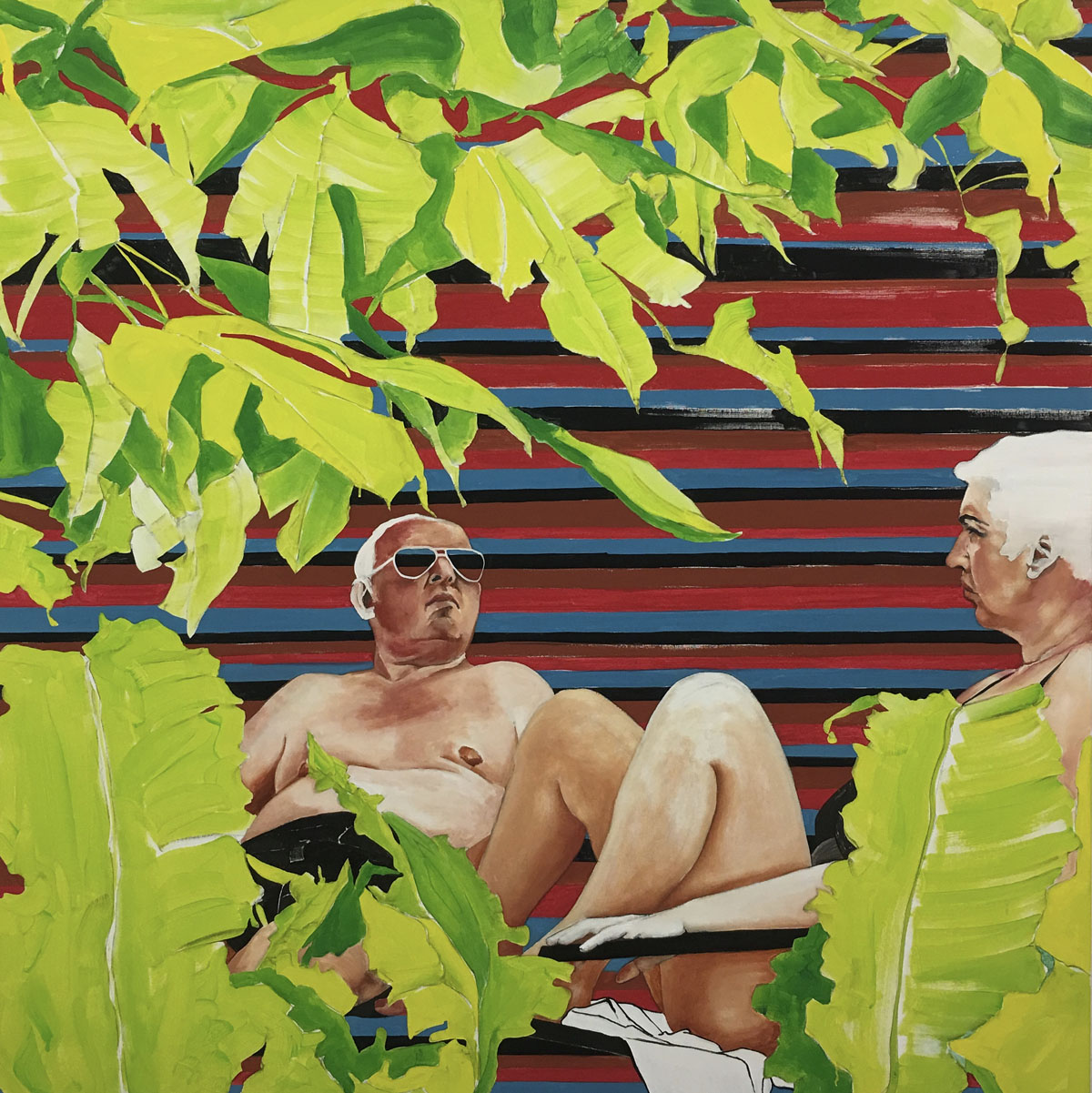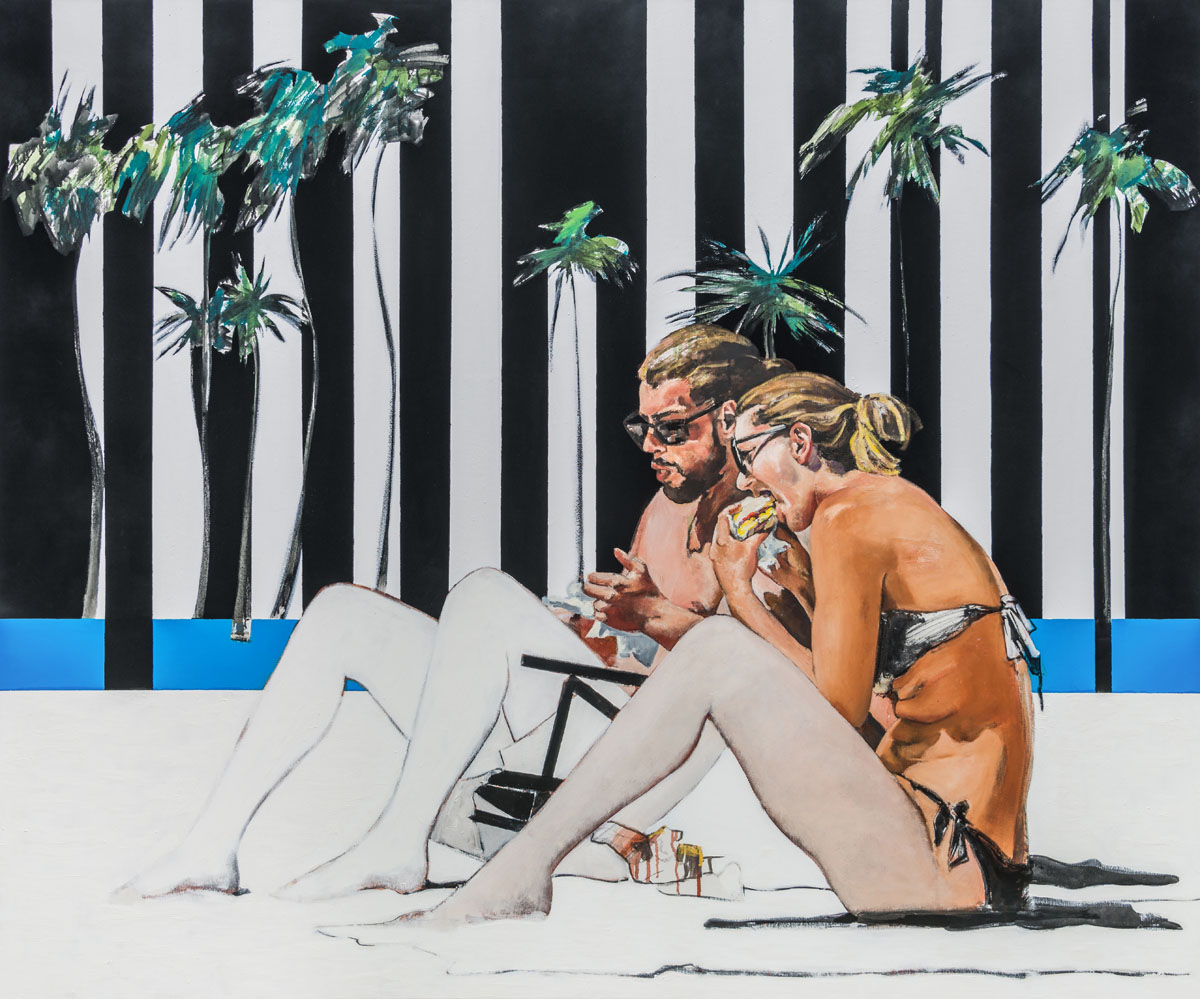Stella Kapezanou’s large-scale figuration paintings feature people from all walks of life. They show the fun of every day, the vulgarity of people and the imperfections of the body. Most of all they are colourful, full of life and completely unapologetic.
When did you first know that you wanted to be an artist?
Painting has been in my life ever since I can remember. When I was little, I was painting with my kiddy crayons next to my mother, who was working with oil paint on canvases. I never thought that I wanted to be an artist, I always felt I am an artist.
STELLA KAPEZANOU: UNAPOLOGETIC PAINTING
People are important in your work. Who are your subjects?
In my paintings, I am interested in images from everyday life. I am trying to see the world I live in, to get into the present tense, in the sense that I am curious about what we consider to be ‘everyday’ habits of groups of people living in capitalistic and material western societies, such as the way people interact and relate to each other, the common interests they share or the social habits that connect them. I like to develop a critical approach to the beliefs and convictions of these societies. I am intrigued by subjects that are not considered ‘high art’ but are ‘ordinary’, in that they are common to the viewer’s eye, and I strive to allow the viewer to observe more deeply what is happening right next to them.
What is your creative process from conception to completion?
I usually take pictures myself with my camera or phone or whatever’s handy. I sometimes collect images from magazines that attract my eye. I frequently use patterns from my childhood memories, such as my grandmother’s bed sheets or tablecloths.
I only focus on very particular parts of them and I use imaginative elements on the same theme. I paint the details from memory. When I begin to work on the blank canvas, I only have a vague idea of what I’m going to do. I add all the extra elements during the process, according to what I feel that the painting itself is asking me to add.
You live in London and Athens – how do the two cities influence your work?
I grew up in Athens and did a five-year BA at the Athens School of Fine Arts, and then moved to London and got an MA Fine Arts from Chelsea College of Arts. Both cities and academic approaches are great and very unlike to each other.
In Athens striving for excellence in skills and deep knowledge of art history is essential. In London, it’s mostly about research and contextualisation of one’s studio practice in relation to the contemporary practice. I feel lucky that I have been exposed to different disciplines.
Greece has had a hard time economically – has this affected you, your work or outlook in any way?
The economic crisis has certainly affected the arts and culture in Greece. There is a deep depression in the sector and many artists, included myself, have migrated to other countries. On the other side, the cultural life in Athens remains bright and effervescent.
This crisis has awakened, paradoxically, a sense of vitality, a rediscovered sense of relations, an amazing artists’ community and feels so nice every time I’m in the city. Athens has an interesting panorama of emerging alternative spaces run by artists, such as the Trii Art Hub that I’m a member of, and a number of galleries with a sparkling activity.

